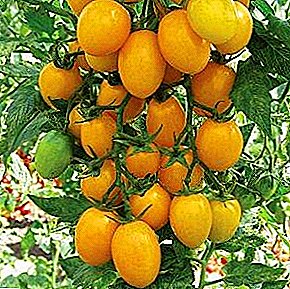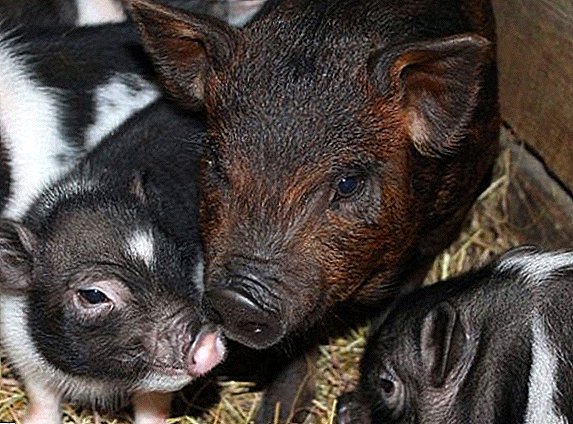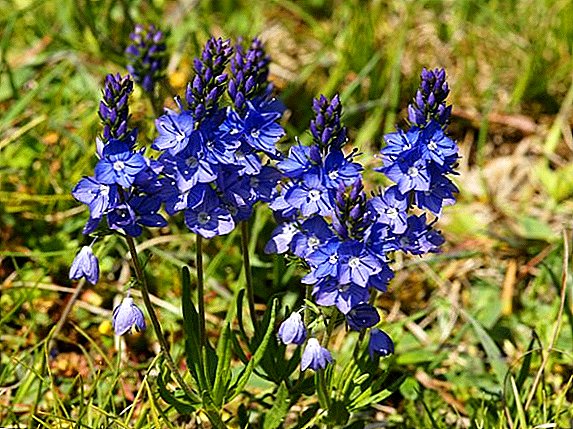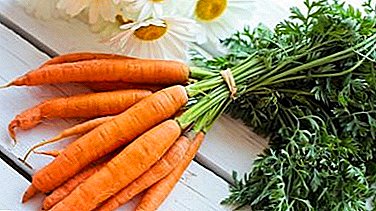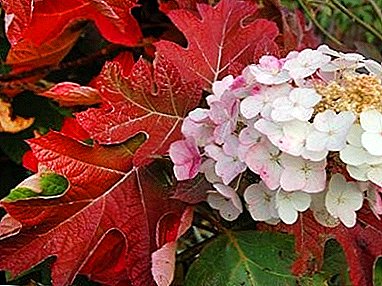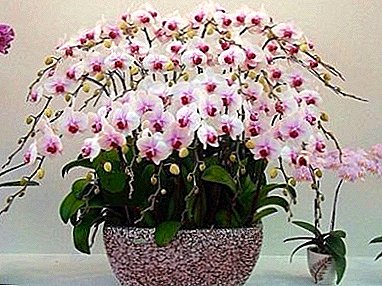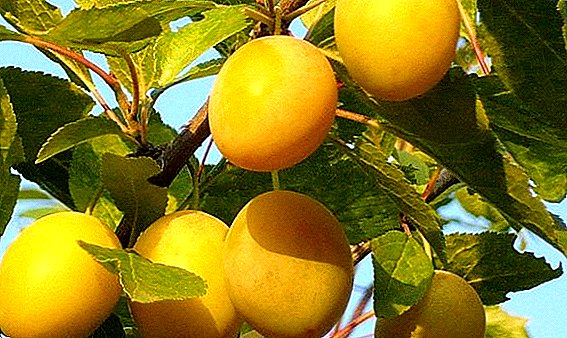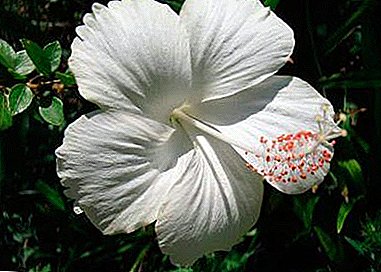
Hibiscus, or, in other words, the Chinese rose, is one of the most charming flowers that came from China. All the more white hibiscus, whose snow petals are full of subtle beauty.
Varieties of white hibiscus have a delicate and beautiful appearance. Such flowers will be a decoration for any place.
In this article we will get acquainted with the varieties of this plant. You will learn how to properly care for white hibiscus, what diseases and pests can affect it. Also read what flowers like it are.
Description and photo varieties
There are several varieties that will delight the owner of delicate white petals.
"Sanremo"

It has a white flower (sometimes with a faint cream shade). Only five petals, pistil bright yellow. The leaves are dark green, smooth and glossy).
"Borias"

Sufficiently compact form. The petals are creamy white with a bright purple heart. The flower has an interesting shape due to the wavy edge of the petals. The leaves are dark green and smooth.
Hybrid Albus

Crossed of several types of hibiscus. It has dense, bright white flowers, the leaves are painted in dark green. Bush usually srednerosly and fairly wide. This variety has large flowers that can reach 20 centimeters.
Hybrid "Diana"

Forms a tall bush. The flowers are simple in shape and have a pure white color.. The edges of the petals are wavy.
How to care at home?
- Temperature. Hibiscus hails from the south of China, because it loves warm air. The most comfortable this flower at a temperature of 18 to 22 degrees. But it should be borne in mind that hibiscus bloom should take place in a cooler environment, and the most optimal temperature in this period will be 15 degrees.
- Watering. The Chinese rose loves water very much, and therefore in the warm and hot season it should be watered twice a day. Water is needed warm and well settled. In the fall and spring watering can be carried out once a day, preferably in the morning.
Another plant needs regular spraying, but it should be remembered that the flowers themselves can not be sprayed, they must remain dry. To create the desired level of humidity, you can use electric humidifiers or simply put water containers at the battery or heaters.
Important: Do not allow the drying of the soil of hibiscus. To avoid this, it is necessary to cover the ground with sphagnum moss.
- Shine. Hibiscus loves the bright sun, because he will like the place on the window sill of the south window. But under the direct hot rays of the sun, a flower can get burnt, so on particularly hot days it is better to shade it or to set it aside, for example, on a table near a window.
- Priming. The ground should be loose and light, with good breathability. Hibiscus will enjoy a soil mixture of the following composition: humus, leaf soil and clay sod in a ratio of 1: 1: 2. You can also add a small amount of river sand and charcoal.
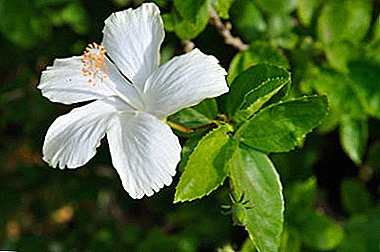 Pruning. Pruning is usually carried out in spring and autumn. In the spring form the crown of the plant, give it the desired shape. In the fall pruning is carried out to stimulate the future flowering.
Pruning. Pruning is usually carried out in spring and autumn. In the spring form the crown of the plant, give it the desired shape. In the fall pruning is carried out to stimulate the future flowering.- It is necessary to determine the height of the plant.
- Find the upper kidney and move away from it 3-4 centimeters.
- Trim the plant.
- Similarly, pruning side shoots, if necessary.
- Top dressing. Top dressing required during flowering. Fertilizers with nitrogen and potassium will help the plant to tie more buds. You can feed the Chinese rose in the autumn, but in this case, the best supplements will be low in nitrogen.
- Pot. Any pot that suits the size of the hibiscus root will do. When transplanting, you should always take a container that is slightly larger than the previous one.
- Transfer. As they mature, the plants are transplanted annually in the spring, adults - once in 3-4 years.Important: If transplantation is not carried out, it is necessary to remove the top layer of soil and replace it with fresh soil.
- In a new pot poured to the bottom of expanded clay, then the ground.
- Hibiscus pour water. So it will be more convenient to extract it together with the earth clod.
- Remove the plant by gently holding the pot.
- Put hibiscus in a new pot with a clod of earth.
- Dust the ground.
- Liberally pour and wrap the ground near the roots of the plant for two days.
- Wintering. In winter, you should not lower the temperature below 10 degrees, as the colder air can cause the leaves to fall. At this time of year, hibiscus has the lowest need in the liquid, because watering is reduced to a minimum. From dressings for this season is also better to give up.
Breeding features
 A suitable time for reproduction of hibiscus is the period from January to March or the period from July to August. Usually this plant is propagated by cutting. Cuttings are obtained by cutting off the tops of young shoots. The cuttings must have at least 3 knots and be strong. They are placed in a container with water. As soon as the first roots grow, they can be planted in pots with soil.
A suitable time for reproduction of hibiscus is the period from January to March or the period from July to August. Usually this plant is propagated by cutting. Cuttings are obtained by cutting off the tops of young shoots. The cuttings must have at least 3 knots and be strong. They are placed in a container with water. As soon as the first roots grow, they can be planted in pots with soil.
Before the appearance of the first leaves, young plants need greenhouse conditions. The greenhouse itself can be constructed from a plastic bottle with a pair of air vents for fresh air intake.
Briefly about diseases and pests
Hibiscus can be threatened by a mushroom infectioncausing vascular wilt. You can get infected from diseased plants. If it is wrong to apply fertilizers (or not to add them at all), then non-infectious chlorosis can be caused in the flower. From insects hibiscus dangerous aphid and spider mites.
Similar flowers
- Significantly similar to white hibiscus unpretentious white oleander, the owner of large white flowers. In addition, it has a wonderful aroma.
- Ruelia Britton has flowers of pale pink color, shaped like hibiscus flowers.
- White streptokarpus has white flowers with bright purple stripes at the core.
- The familiar begonia also has similarities with hibiscus.
This flower has more than 900 varieties, and its tuberous species are most similar to the Chinese rose. For example, the begonia variety of Odorata White has snow-pink corrugated flowers.
Like any native of faraway countries, hibiscus needs special conditions. But all efforts and efforts are generously rewarded by its beauty.


 Pruning. Pruning is usually carried out in spring and autumn. In the spring form the crown of the plant, give it the desired shape. In the fall pruning is carried out to stimulate the future flowering.
Pruning. Pruning is usually carried out in spring and autumn. In the spring form the crown of the plant, give it the desired shape. In the fall pruning is carried out to stimulate the future flowering.
